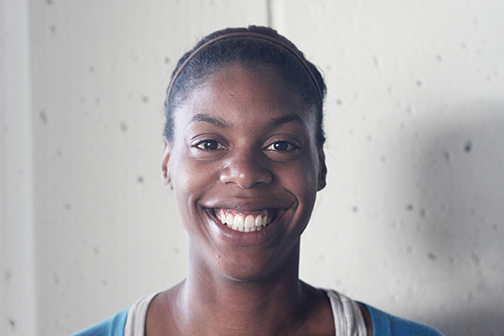Written by Adam Burkhart, senior staff writer, and Luke Henning, staff writer
Polls open tomorrow in San Diego’s special election for mayor, and in anticipation The Aztec took to campus to get your questions about the candidates and their positions. We scoured the media coverage so far, the candidates’ written platforms and their public statements to find out where they stand on the issues that affect you. Below you might find that last tidbit of information that could swing your vote on election day.
What are the candidates’ plans to reduce homelessness in San Diego? (criminal justice senior Ashley Kennard)
The issue of homelessness is one issue that the candidates agree on across the board, though they have slightly different ideas as to how to alleviate the problem.
David Alvarez: Though he has acknowledged that homelessness in San Diego is not being dealt with correctly, Alvarez supports permanent housing for the homeless, a solution that went through City Council while he has been in office.
Mike Aguirre: Aguirre pledged to keep current homeless shelters open as a temporary solution. He recommended assigning caseworkers to homeless individuals, and as city attorney argued against ticketing homeless individuals if there were no shelters available.
Kevin Faulconer: He went against his party and ignored the complaints of downtown business owners to support placement of a permanent homeless shelter in downtown. He hopes to bring permanent homeless shelters to other areas throughout San Diego in a plan similar to Alvarez’s.
Nathan Fletcher: While in the state Assembly, Fletcher passed a bill to prevent homeless youth from paying wage garnishments on citations they received until they had stable housing or reached the age of 25. Fletcher said he supports citywide homeless reforms, but does not have an official plan.
What are their plans for disadvantaged areas? (psychology junior Gonzalo Acosta)

Barrio Logan has been one of the most important areas of debate among the candidates, and many of their neighborhood plans have been specifically focused on this historically underprivileged area. Though they have not gone into depth about other disadvantaged areas, their stances on the Barrio Logan development plans are a good indicator as to how they might handle other neighborhoods.
Alvarez: One of the main focuses of Alvarez’s campaign is the Blueprint for San Diego plan that includes investment in neighborhoods. During his time in the City Council, Alvarez has been a staunch supporter of his home neighborhood of Barrio Logan. He has been a keen supporter of the redevelopment of Barrio Logan into a residential area with less industry.
Aguirre: One of Aguirre’s main campaigning points has been his plan to reform the city’s pension system. He plans to use some of this money to help redevelop underprivileged areas. He also called for further organization of neighborhoods into political lobbies to better represent themselves in city government.
Faulconer: Similar to Aguirre, Faulconer has supported pension reform to free up funds for neighborhood development with a focus on infrastructure improvements. However, he has been opposed to Alvarez’s redevelopment plan in Barrio Logan, siding with industrial maritime interests in the area who want it to remain open for further industrial development.
Fletcher: Fletcher occupies the middle ground between Alvarez and Faulconer on the issue of development in Barrio Logan and in a recent debate called for a compromise between the two City Council members’ plans. He has called for a balance of industry and residential zoning in Barrio Logan so as not to dismantle the community or the industry that helps support it.

How do they plan to attract more high-skilled jobs to San Diego? (finance senior Andrew Jacobson)
The candidates have offered a wide variety of job plans that for the most part focus on growing established business areas within San Diego, though each has a slightly different approach to the issue.
Alvarez: Alvarez’s job plan revolves around building up inner city jobs through development in needy areas for roads and affordable housing units, but has less of a focus on high-skilled jobs than other candidates. He is, however, a backer of bringing green industries such as solar panel development to San Diego and improved business with cross-border cooperation.
Aguirre: Aguirre plans to add new jobs to San Diego by expanding companies that are already based in the city through economic incentives. His plan is more extensive on cooperation with businesses across the border in Tijuana than Alvarez’s job plan. He also wants to attract more entrepreneurs by loosening restrictions on start-up businesses within San Diego.
Faulconer: Similar to Aguirre’s plan, Faulconer’s job plan focuses on further developing San Diego’s current businesses, though he supports more extensive regulation cuts. He has backed plans to aid veterans in getting jobs within city agencies after completing their military service, and plans to improve the San Diego Convention Center. His plans also include negotiating a permanent deal to have Comic-Con International remain in the city.
Fletcher: One of the key points of Fletcher’s campaign is his extensive jobs plan, which includes adding 130,000 new jobs to San Diego by 2020. In order to carry out this ambitious plan, Fletcher wants to attract manufacturing jobs to the city as well as build up the already booming biotech industry through business incentives.
Is there anything they can do about parking or traffic in downtown? (advertising senior Tony Tao)

While the candidates haven’t spoken at great length about this issue in particular, they have stated plans that could affect your ability to find parking the next time you venture into downtown. Walkable, bike-able streets and public transit have been major talking points. And though you may shun all three, more people biking and riding buses may free up some meters.
Alvarez: Similar to Fletcher and Faulconer, Alvarez is a cyclist and uses his bike to commute. He wants to increase spending on biking infrastructure to $1 million, and as a councilman he approved the city’s new bike-share program, which will bring 1,800 bikes to the city by 2014. That deal will, however, result in the loss of some parking meters.
Aguirre: Aguirre will most likely not be seen atop a 10-speed anytime soon. However, his website outlines his promise to make neighborhoods more pedestrian and bicyclist friendly. When The Aztec spoke to him for an interview two weeks ago, he said he would hand more authority to city planning groups independent of the government by changing the municipal code and city charter.
Faulconer: In a forum on city streets hosted by the Livable Streets Coalition in October, Faulconer acknowledged that parking downtown can’t keep pace with the increase to 90,000 residents projected in the Downtown Community Plan. He favors smart growth: Planning concentrated communities with a focus on walkability and public transit. On the City Council, he also approved the city’s new bike-share program.
Fletcher: Fletcher’s goal is to increase the number of San Diegans commuting by bicycle to 65,000 by 2020, which he said will eliminate 11 million vehicle trips per year. He wants to carry out suggestions in the city’s Bicycle Master Plan to create 595 more miles of bike lanes and paths.

Do any of them have a plan to encourage low-income high schoolers to attend college? (international economics senior Paola Hernandez)
While the city of San Diego does not directly shape education policy, which falls on the San Diego County Board of Education and school districts, several of the candidates have attempted to answer how they rate education on their list of issues.
Alvarez: Alvarez wants the city to partner with all school districts by calling on businesses, nonprofit organizations and city facilities to create after-school programs for students. He aims to aid students along career paths by creating 10,000 internship opportunities for San Diego Unified School District students through joint efforts with businesses. Alvarez is endorsed by SDUSD Board of Education President John Lee Evans.
Aguirre: Being so focused on pension reform and the need for financial conservatism, Aguirre isn’t touting any grand plans for education. However, when asked about his plan for education by CBS News 8, Aguirre said he would begin by ousting education lobbyists from City Hall and replace them with scientists, librarians, researchers and other types of technical experts to generate workable ideas for education.
Faulconer: Faulconer wants to increase the amount of internship opportunities for underprivileged youth in the challenging science, technology, engineering and math fields. He plans to create 2,500 summer jobs by 2016 by partnering with local educational programs. He also promises to increase library and recreation center hours so students can have safe and productive learning environments.
Fletcher: Fletcher proposes to create a mayoral education foundation composed of public and private entities, and test-pilot a program in which low-performing schools can enroll and have business leaders rework their administration, curriculum and budget. He also proposes a School2Work program offering internships to students grades eight through 12.
Do any of the candidates support a zero-waste mentality? (social science senior Tom Hamilton)

Not all of the candidates named had zero waste as a priority, but all had something to say about the environment and sustainability.
Alvarez: Alvarez does specifically spell out a zero-waste platform in his city blueprint, as the City Council currently considers a zero-waste plan for the city. Alvarez wants to divert organic waste from landfills and use it to make compost fertilizer. He also wants to promote business opportunities in recycling building materials, appliances and electronics.
Aguirre: In our conversation with Aguirre he said his main priority was securing a reliable water supply for San Diego by rebuilding watersheds that would lessen our dependence on imported water. He has also cited residential solar panels as an alternative energy source he supports.
Faulconer: Faulconer’s website boasts of his achievements when it comes to sustainable, green projects. In addition to the bike-sharing program already mentioned, he supported expanding the Car2Go car-sharing program and the installation of electric-car charging stations throughout San Diego.
Fletcher: Fletcher’s plans to reduce waste include the elimination of Styrofoam—which is non-biodegradable—from city facilities, events, concessions and offices. Fletcher also wants to make “green” streets that collect, filter and reuse storm water by directing runoff into street planters and storage systems.










